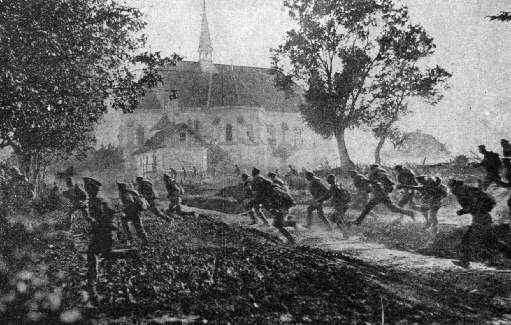 |
| Old postcard view of Ternopil' Ukraine |
Ternopil', a city in Western Ukraine is my subject--why did I choose
this city? First of all, although none of my ancestors lived in
Ternopil', most of them came from villages near this city, as did many
other Ukrainian and Jewish immigrants to the United States. Second,
Ternopil's names give a hint of its history--Ternopil' is its Ukrainian
name, Tarnopol is the name in Polish, in Russian it is Ternopol, in
German, Tarnopol. All these powers ruled it at one time.

Ternopil' is located in Western Ukraine, in Galicia, (in Ukrainian, Halachyna), a very old and important part of Ukraine, about 70 miles east of Lviv. Ternopil' is one of the major cities of Ukraine today. It is located on the Syret River, a tributary of the Dniester River. The population was 218,614 in 2010 and about 13,000 in 1900, when many of my ancestors lived in the area. According to the Encyclopedia Britannica, Ternopil' today is a railroad junction and industrial city. Its industries include light engineering, food processing and manufacturing consumer goods. As I mentioned earlier, none of my ancestors lived in this city, but my maternal grandmother's families, the Rychlyjs and the Bryniaks, lived in Bila, a village just outside the city walls of Ternopil', about a 15 minute walk to the city center. My other ancestors, the Kocuiba (Koshuba), family lived in Ozerna, about 13 miles to the west, the Nyznyk family came from Pomorany, 30 miles west, and the Klak family lived in Zarvanytsia, about 25 miles southwest.
Galicia played an important part in Ukrainian history. Early Ukrainian history took place in Kiev, but as the influence of Kiev began to weaken, Galicia became more important. The ruler of Kiev, Volodymyr the Great (980-90) is best known for bringing Christianity to Ukraine. Volodymyr won Galicia from Poland and integrated it into his realm.
In the 13th century, Prince Danylo of Halych, a descendent of Volodymyr, took control of Galicia. During his rule he initiated several important policies in Galicia. Orest Subtely, author of Ukraine, a History (1988), said that Danylo sought the support of townspeople and peasants to offset the powers of the noblemen. In order to populate his new towns, he encouraged artisans and merchants from Poland and Germany to settle them. Armenians and Jews also came to Galicia, which developed a multi-ethnic population, that continued until the 20th century. When Galicia was conquered by the Mongols in 1246, Danylo pledged loyalty to them. This didn't stop him from establishing relations with European powers , Poland, Hungary, and Rome. Danylo died in 1264, and by working to keep the Mongol/Eastern influence out of Galicia, he turned Galicia towards Western Europe. (Subtelny pp. 61-63).
 |
| Jan Tarnowski, founder of the city of Ternopil' |
Now to Ternopil'. The city was founded in 1540 by Jan Tarnowski, a Polish nobleman. He build a walled town with a castle and a defensive moat/pond. Galicia and the city of Ternopil' were governed by various Polish kings and nobles until 1772, when they became part of the Austrian Empire in the first partition of Poland. The people of Galicia, especially Ukrainians and Jews did well under Austrian rule, and the the city of Lviv became a center of Yiddish culture and Ukrainian nationalism.
In 1870, a railroad line was built that connected Ternopil' to Lviv. Ternopil' was now connected to the major cities of the Austrian-Hungarian Empire as well as the cities of Europe. It became a railroad center and its population grew. The city of Ternopil' had a diverse population, in 1900 the city population was 28% Ukrainian, 27% Polish and 44% Jewish.
 |
| Ternopil Railroad Station |
World War One was very hard on Ternopil', as Austrian, Russian, and German armies invaded the city, its residents suffered great hardship. It wasn't far from the Russian border, and many important battles took place nearby. My Great Aunt Kathrine Pylatuik Lymar told of her village, Bila, being shelled, killing family members, destroying homes, and of having food, possessions and farm animals stolen by soldiers of the various armies. The city was burned by the retreating Russian Army in 1917. After the War ended in 1918, Ternopil' was part of Ukrainian Peoples' Republic. It was captured by Polish and Russian forces in the Polish-Soviet War. According to the Treaty of Riga,which ended the Polish-Soviet War, Galicia and Ternopil' became part of the Republic of Poland in 1920, and remained part of Poland until 1939.
 |
| Russian Soldiers Retreating from Ternopil', 1917 |
World War Two was even more destructive to Ternopil'. As a result of the Molotov-Von Ribbentrop Treaty, the Soviets and the Germans divided Poland in 1939. Western Poland came under German control and Eastern Poland, including Galicia became part of the USSR.
 |
| Planned Division of Eastern Europe, 1939 and Actual Changes 1939-1940 |
Many people were deported to Siberia and other eastern areas of the Soviet Union. In 1941, the Nazi armies invaded Galicia and Ternopil', killed most of the Jewish population and sent Ukrainians to forced labor camps in Germany. Most of Ternopil' was destroyed in 1944. After the war, many Polish residents of eastern Galicia, including my great Uncle Andrei Klak and his family, relocated to Western Poland, near the city of Wroclaw. Wroclaw had been part of Germany, known as Breslau. One of the results of the destruction of World War II was that very few buildings in Ternopil' survived, so the city was rebuilt. Ternopil' remained part of the Soviet Union until 1991, when the Soviet Union dissolved and Ukraine became an independent country.
 |
| Ternopil' today. Source: The Encyclopedia of Ukraine. |
I love the fact that you focused on the goal, rather than the peripheral things! Please share something on Ternopil National Medical Univesity also i want to study mbbs there.
ReplyDelete